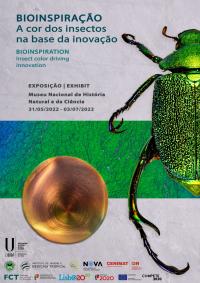Travelling colourful patterns in self-organized cellulose-based liquid crystalline structures
- Citation:
- Silva, PES, Chagas R, Fernandes SN, Pieranski P, Selinger RLB, Godinho MH. 2021. Travelling colourful patterns in self-organized cellulose-based liquid crystalline structures, 2021. 2(1):79.
Abstract:
Cellulose-based systems are useful for many applications. However, the issue of self-organization under non-equilibrium conditions, which is ubiquitous in living matter, has scarcely been addressed in cellulose-based materials. Here, we show that quasi-2D preparations of a lyotropic cellulose-based cholesteric mesophase display travelling colourful patterns, which are generated by a chemical reaction-diffusion mechanism being simultaneous with the evaporation of solvents at the boundaries. These patterns involve spatial and temporal variation in the amplitude and sign of the helix´s pitch. We propose a simple model, based on a reaction-diffusion mechanism, which simulates the observed spatiotemporal colour behaviour.
Notes:
n/a


